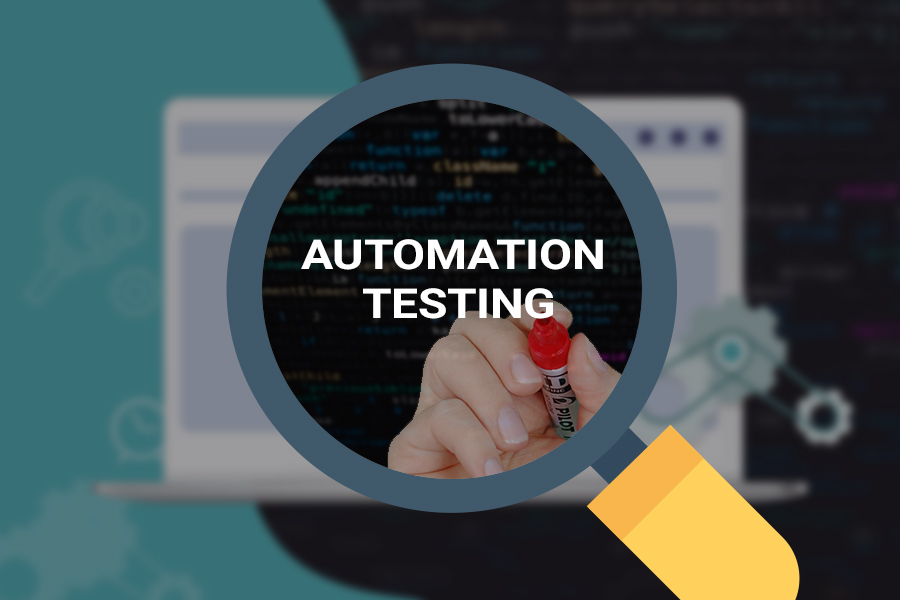From Guidebook to Automated Screening: A Comprehensive Guide to Transitioning Smoothly and Efficiently
In the realm of software application screening, the change from guidebook to automated processes has ended up being a significantly vital transition for companies seeking to improve performance and precision in their testing methods. The journey from manual to automated testing is not without its obstacles, but when approached strategically and with a clear plan in mind, the benefits can be substantial.
Benefits of Automated Checking
Automated testing uses numerous benefits, boosting effectiveness and precision in software application development processes. Automated tests can be run all at once on numerous gadgets and operating systems, drastically speeding up the testing stage contrasted to manual screening.
In addition, automated screening guarantees a greater degree of precision in discovering issues. Consistency in testing is also boosted, as automated tests carry out the same steps exactly each time they are run.
Choosing the Right Tools

Firstly, examine your demands and purposes. Understand the extent of your task, the innovations entailed, and the ability of your team. This evaluation will aid you figure out the abilities and functions you require in your testing devices.
Secondly, think about the compatibility of the tools with your existing procedures and systems. Seamless integration with your present software program development lifecycle is necessary to make certain a smooth shift to automation.
Furthermore, examine the scalability and versatility of the devices. As your screening requires evolve, the devices must have the ability to adjust and fit changes successfully.
Lastly, variable in the assistance and community around the tools. When carrying out automated screening, robust assistance and an active user neighborhood can offer beneficial sources and support. By meticulously thinking about these aspects, you can choose the right devices that align with your requirements and established the stage for a successful transition to automated testing.
Writing Reliable Examination Manuscripts

When crafting test manuscripts, it is important to take into consideration the certain requirements of the software being checked and ensure that the scripts deal with all critical functionalities. Detailed and clear naming conventions for test scripts and examination situations can boost readability find more and maintainability. In addition, incorporating mistake handling systems within the examination scripts can aid in determining and dealing with concerns without delay.
Moreover, arranging examination manuscripts right into modular components can enhance reusability and scalability, lowering redundancy and enhancing effectiveness in test manuscript maintenance. Regular testimonials and updates to test scripts are important to keep speed with progressing software program requirements and functionalities. By following these principles, testers can create effective and durable examination manuscripts that add substantially to the success of automated screening processes.
Integrating Automation Into Workflows
By seamlessly incorporating automated testing devices like Selenium or Appium into the software program advancement lifecycle, groups can achieve faster comments on code modifications, leading to quicker pest discovery and resolution. This assimilation enables for constant screening throughout the advancement process, guaranteeing that any kind of concerns are recognized early on, resulting in greater software application top quality. Proper assimilation of automation devices needs collaboration in between development, screening, and procedures teams to establish a unified process that enhances performance and efficiency in providing top notch software program products.
Making Sure a Smooth Change
Effectively transitioning to automated screening involves precise preparation and mindful execution to minimize disturbances and maximize efficiency in the software advancement process - automation testing. To ensure a smooth shift, it is important to begin by performing an extensive analysis of the existing testing procedures and identifying areas where automation can bring the most considerable advantages. Engaging with all stakeholders early at the same time, consisting of designers, testers, and job managers, is vital for gathering assistance and buy-in for the automation campaign
Interaction is key throughout this transition stage. Clear interaction of the objectives, benefits, and expectations of automated screening aids to take care of any kind of resistance or problems that may occur. Additionally, giving important source adequate training and sources for team members to upskill in automation tools and strategies is important for ensuring a successful transition.

Verdict
To conclude, transitioning from manual to automated screening supplies countless benefits, consisting of increased efficiency and dependability. By picking the ideal devices, composing reliable examination manuscripts, and integrating automation perfectly right into workflows, organizations can ensure a successful and smooth change. It is important to accept automation as an important have a peek at this site property in software application testing processes to improve general quality and productivity.
In the world of software screening, the shift from manual to automated procedures has become an increasingly crucial change for organizations seeking to improve effectiveness and precision in their testing techniques. Automated tests can be run concurrently on multiple gadgets and operating systems, significantly speeding up the testing stage compared to hands-on testing. Consistency in screening is likewise boosted, as automated tests carry out the exact same steps precisely each time they are run.To ensure the successful execution of selected screening devices, the development of reliable test scripts plays a vital function in verifying the performance and performance of automated procedures - automation testing. By following these principles, testers can produce durable and effective examination scripts that add dramatically to the success of automated screening processes